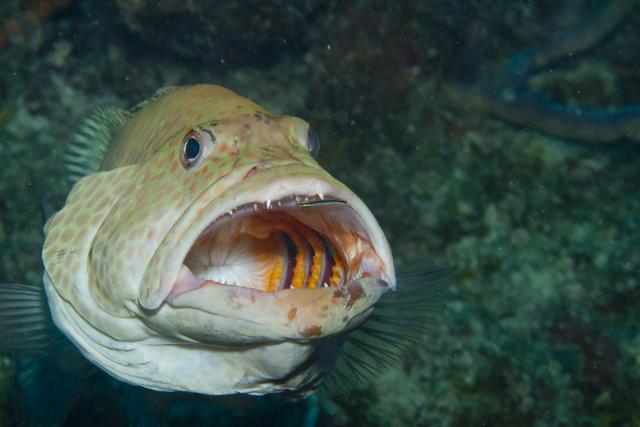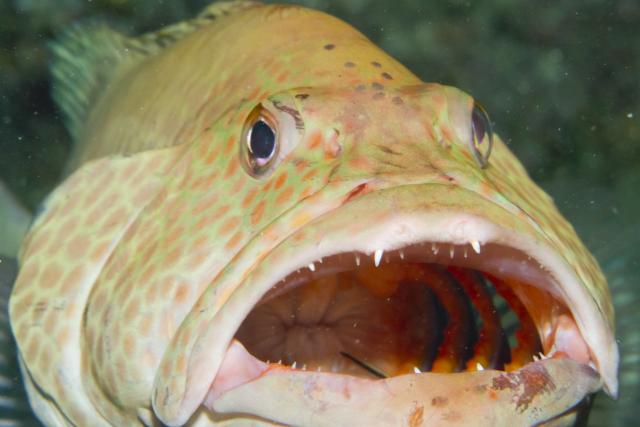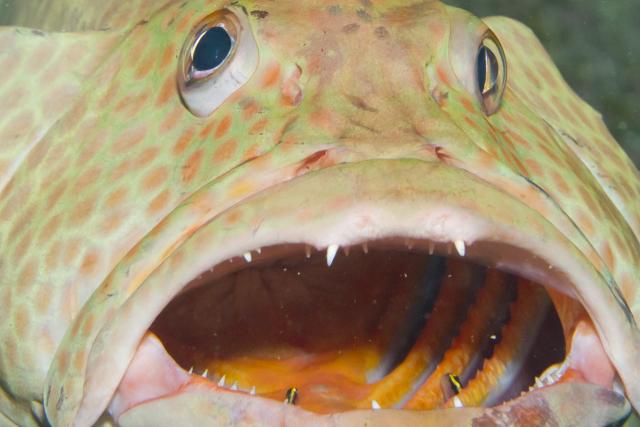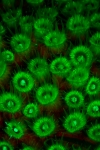Reply to comment
Turks and Caicos Explorer 2015: Cleaning Goby and Graysby
ktuli — Thu, 12/03/2015 - 20:25
It is a dangerous job, but somebody's gotta do it!
At first glance, this photo might look like just a big fish with a big mouth showing off some teeth.
Well, truth be told, he is showing off those teeth, but not to the camera... Look a little closer...
Ok - if you didn't notice that little fish in the first shot, scroll back up and look for it - it is right on the bigger fish's upper lip. Now, I know it is blurry in this second shot, but see that stripe inside the fish's mouth, that's that little fish! So now you might be thinking he's a goner... but let's look a little closer still...
Now there are two of them in there!?!? What the heck is going on?
Technical Data: Canon EOS 7D, Canon EF 100mm f/2.8L Macro IS USM, 1/160th sec at f/16. Image Stabilization on. ISO 400. Ikelite Housing and Port and Ikelite 161 Strobe in TTL Mode. Raw conversion in Photoshop CS5.
Well, the big fish is a Graysby (Cephalopholis cruentatus) - they're in the grouper family, and the little fish are Cleaning Gobies (Elacatinus genie). While it may look like the Graysby is eating the tiny little Gobies, that couldn't be further from the truth. In fact, it is the gobies that are getting a bit to eat!
The little cleaning gobies provide a service to the other fish on the reef by eating parasites and removing stuck morsels of food that may have gotten stuck in teeth, jaws, and even between gills. There is an unwritten code that the gobies are safe to swim in and out of the bigger fish's mouth to provide this service, and they don't have to worry about getting swallowed up. Somehow the bigger fish manage to provide some sort of body language to the cleaning gobies to let them know they need some work, and the gobies know how to interpret the other fish to know when it is safe.
You can see this going on on the reef almost all day long, but it definitely seems more prevalent in the morning hours - maybe fish get morning breathe and this helps, I don't know... All I do know is that is it a very cool interaction between species and it is always fun to witness and photograph it during a dive.
I've shared some other photos of some Pederson's Cleaning shrimp providing the same service before.... perhaps next time I'll have to remember to get some video.
- Bill






